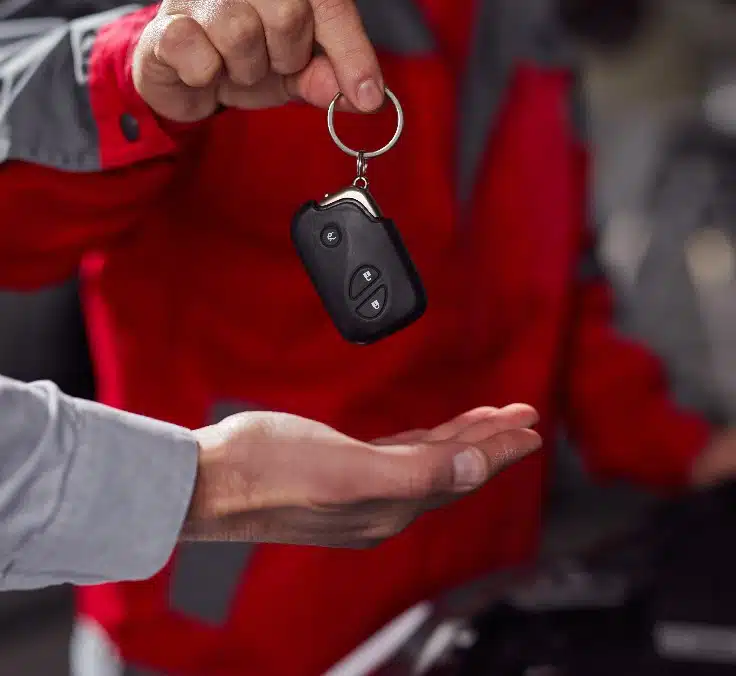SUSTAINABILITY| 03.07.2023
Last mile mobility: the challenge of becoming quicker and more sustainable
As more people are buying more and more products over the Internet, it has become crucial to deliver these orders quickly and efficiently to customers. In fact, we associate the e-commerce concept with immediacy.
The Internet makes available infinite catalogs of products from around the world that enable you to get what you want, and from wherever you want it, in 24 or 48 hours. But what impact do all these deliveries have on our cities and our planet?
What is last mile logistics?
The process that your order follows from the moment you click on “add to cart” until the delivery person arrives at your home is not simple, but it is very fast. First they must confirm your order at the main warehouse, then they proceed to the packing and ship it to the distribution center in your area. Once it arrives at the logistics point closest to you, a delivery driver will take it to its final destination. This is where the American concept of last mile mobility comes into play, which aims to optimize the final step until the product reaches your home.
It is the final stage of the logistics chain and encompasses the shortest distance between the logistics center in your area and your home.
Benefits of optimizing last mile mobility
Sustainable last mile mobility can have a positive impact on both the environment and on people’s quality of life. These are the main ones:
- Reduction in emissions: By using more efficient and sustainable vehicles, such as electric cars or vans, bicycles, scooters and other electric delivery vehicles, we can reduce greenhouse gas emissions and pollution. These vehicles produce less or no exhaust emissions compared to internal combustion vehicles, thus helping mitigate climate change and improve air quality in urban areas.
- Less traffic congestion: Using smaller, more agile vehicles that take up less road space can help reduce traffic congestion. This can have a positive impact on traffic flow, reduce travel times and reduce the need to build new transportation infrastructure.
- Optimization of routes and deliveries: By using planning and tracking technologies, we can optimize delivery routes, thus reducing the distance traveled and the number of vehicles required. This leads to a reduction in fuel consumption and emissions, as well as a more efficient use of resources.
How is last mile logistics applied?
The main objective of last mile mobility or logistics is to optimize the delivery of products or services, thus minimizing costs, reducing delivery times and improving the customer experience. To achieve this, companies and cities are adopting various strategies. These include route optimization, the use of advanced tracking and planning technology and the implementation of more sustainable and environmentally friendly vehicles.
Use of special vehicles: As noted earlier, companies can use delivery vehicles designed specifically for last mile mobility. Such vehicles are more suitable for short distances and can access congested urban areas and enable quicker and more efficient delivery.
Optimized routes and planning: By using route planning algorithms and software, delivery routes can be optimized to minimize the distance traveled and the time spent. This helps reduce fuel costs and improves the timeliness of deliveries.
Urban distribution centers: Establishing distribution centers closer to the areas with the highest concentration of customers reduces the total delivery distance. These centers can be smaller and strategically located so as to streamline last mile mobility.
Use of tracking technology and notifications: Providing customers with real-time information on the status of their delivery such as package tracking can improve the customer experience and reduce waiting-related anxiety. In addition, text message or email notifications can alert the customer to the imminent arrival of the package.
Collaboration with delivery services: E-commerce companies can partner with existing delivery services, such as courier companies or ride-sharing services to leverage their infrastructure and delivery capabilities.
Use of flexible delivery options: Offering flexible delivery options, such as delivery at specific times or at convenient pick-up points, allows customers to choose the option that best suits their needs. This can reduce failed delivery attempts and improve customer satisfaction.
Adoption of micro-logistics solutions: Micro-logistics solutions, such as automated delivery lockers or pick-up points in physical stores, can simplify and streamline package delivery. Customers can pick up their orders at locations close to their home or workplace, thus saving time and reducing reliance on door-to-door delivery.
These benefits show how sustainable last mile mobility can have a positive impact on both the environment and people’s quality of life by reducing pollution, improving logistics efficiency and furthering the transition to a more sustainable model of transportation and product delivery.
At MAPFRE Open Innovation and our CESVIMAP center, we tackle connected, autonomous, shared and electric mobility by developing, experimenting with and implementing innovative solutions not only in mobility, but also to help MAPFRE transform the insurance industry.
RELATED ARTICLES:



